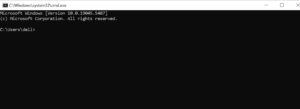Introduction
Malware is one of the biggest threats to digital security today. Whether you’re using Windows, Mac, or Android, cybercriminals are always looking for ways to infiltrate your device. But how do you know if your device is infected? More importantly, how can you detect and remove malware before it causes serious damage?
In this guide, we’ll break down how to detect malware on different devices and the best methods to keep your system clean.
What is Malware?
Malware, short for malicious software, is a broad term for any software designed to harm or exploit your device. It includes viruses, spyware, ransomware, and trojans. Cybercriminals use malware to steal data, corrupt files, or take control of your system.
Common Signs of Malware Infection
- Slow device performance
- Frequent crashes or freezes
- Unusual pop-up ads
- Unauthorized changes to settings
- High CPU or disk usage
- Suspicious programs running in the background
How to Detect Malware on Windows 10 & Windows 11
Windows users are common targets for malware attacks. Here’s how to check for malware on Windows 10 and Windows 11:
1. Use Windows Security
Windows has a built-in malware scanner that can help:
- Open Windows Security from the Start menu.
- Click on Virus & threat protection.
- Select Quick Scan or Full Scan to check for threats.
- Follow the prompts to remove any detected malware.
2. Run Windows Virus Scan Command
You can manually trigger a virus scan using the command prompt:
- Press Win + R, type
cmd, and hit Enter. - Type
cd C:\ProgramData\Microsoft\Windows Defender\Platform\*. - Run
MpCmdRun -Scan -ScanType 2for a full system scan.

3. Use Malwarebytes for Advanced Detection
Malwarebytes is a trusted third-party tool to detect and remove malware:
- Download and install Malwarebytes.
- Run a full system scan.
- Quarantine and delete any detected threats.
How to Check for Malware on Mac
Macs are often considered more secure, but they are not immune to malware. Here’s how to detect and remove malware on a Mac:
1. Check for Unusual Activity
- Open Activity Monitor (Cmd + Space, then type “Activity Monitor”).
- Look for high CPU or memory usage from unknown apps.
2. Remove Suspicious Apps
- Go to Applications > Utilities > Terminal.
- Type
ps aux | grep -i malwareto check for malicious processes. - If found, manually delete the suspicious application from Applications.
3. Use Malwarebytes for Mac
- Install Malwarebytes for Mac and run a full scan.
- Quarantine and remove any threats found.
How to Detect Malware on Android
1. How to Know if You Have Malware on Your Phone
Signs of malware on Android devices include:
- Unexplained battery drain
- Excessive pop-up ads
- Unusual app behavior
2. Use Google Play Protect
- Open Google Play Store.
- Tap on your profile picture > Play Protect.
- Tap Scan to check for malware.
3. Remove Suspicious Apps
- Go to Settings > Apps & Notifications.
- Look for unfamiliar apps and uninstall them.
4. Use Malwarebytes for Android
- Download Malwarebytes Mobile Security.
- Run a scan and follow removal instructions.
How to Detect Malware on Your Computer (Reddit Tips & More)
Reddit users recommend these additional steps to check for malware:
- Use Safe Mode: Restart your PC in safe mode and run a malware scan.
- Check Task Manager: Look for unknown processes.
- Monitor Network Activity: Use
netstatcommands to detect unusual connections.
FAQs
What are the signs you have malware on your computer?
Common signs include slow performance, pop-ups, and unknown programs running in the background.
How do I clean my computer from malware?
Run a malware scan using Windows Security or Malwarebytes, remove any detected threats, and reset your browser settings.
How can I check my device for malware?
Use built-in security tools like Windows Defender, Google Play Protect, or Malwarebytes.
How to run a free malware scan?
Download Malwarebytes or use built-in tools like Windows Defender for a free malware scan.
Conclusion
Detecting malware is crucial for keeping your devices secure. Whether you’re using Windows, Mac, or Android, regular malware scans and good security habits can protect you from cyber threats. If your device shows any signs of infection, act fast to remove malware before it compromises your data.






